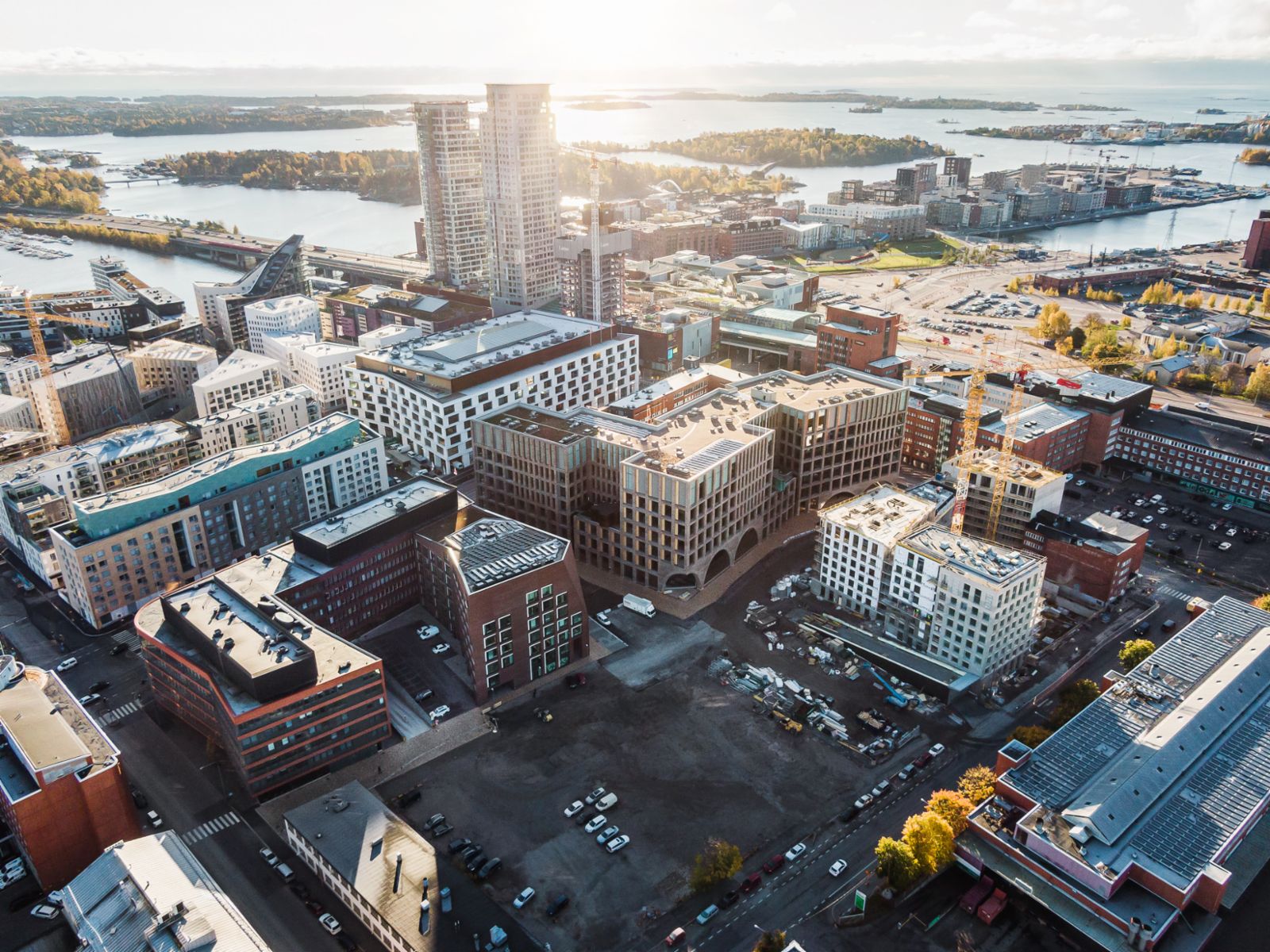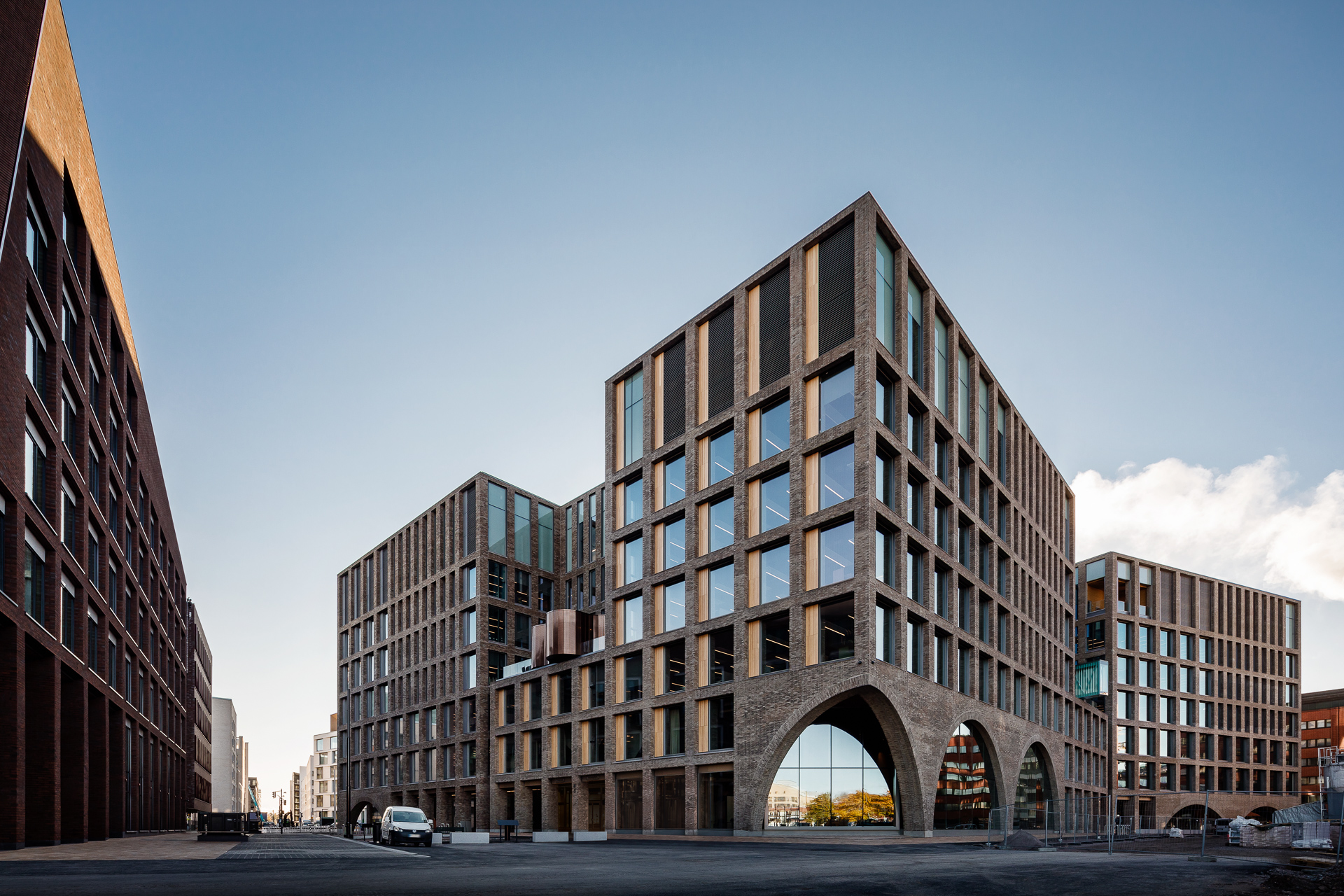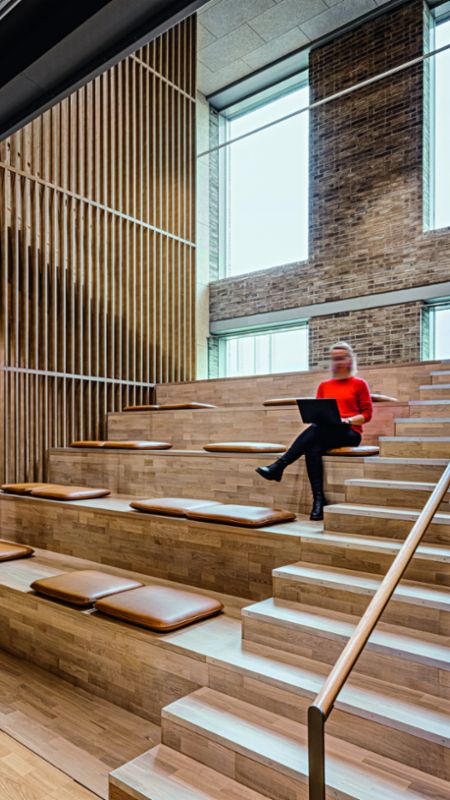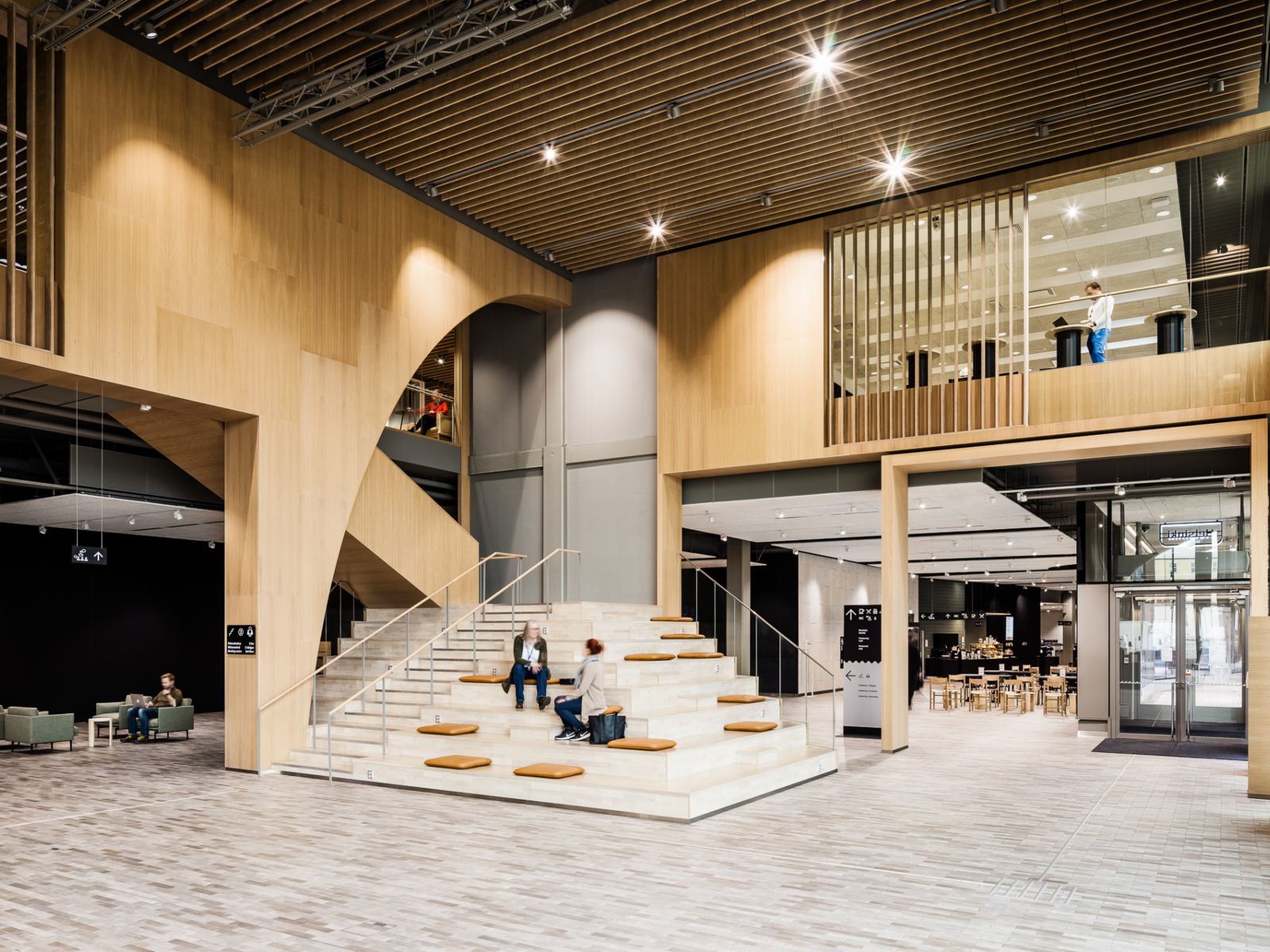
Ready for a worst-case disaster: if climate change leads to the Baltic Sea breaching the harbour walls, employees of the City of Helsinki will be able to continue working in their officesat Työpajankatu 8.During construction of the Urban Environment House, allowance was made for the sea level rising by up to three metres. Although water would get in, the materials used ensure that the building core would not be affected. That’s sustainable thinking in the truest sense of the word! ↓
Sustainable building, sustainable agenda
That is perhaps the most impressive sustainability fact about the Urban Environment House, but it’s far from the only one. Located in the Finnish capital and comprising 27,000 square metres of usable floor space, the seven-storey office building is one of the most sustainable buildings in Union Investment’s portfolio and meets the EU’s taxonomy criteria. For Marianna Tuomainen, it’s a natural environment in more ways than one. As development manager for facility services in the City of Helsinki’s Urban Environment Division, she is responsible for improving the quality and management of public buildings. It’s no coincidence that the terms “urban” and “environment” are conjoined here. “We want to be carbon-neutral by 2035. It seemed only logical for us to move into a building that is as sustainable as this one.” ↓

“We want to be carbon-neutral by 2035. It seemed only logical for us to move into a building that is as sustainable as this one.” Marianna Tuomainen development manager at the City of Helsinki

Innovative heating technology, no private parking spaces
Ecological factors played a part right from the start when selecting a location. The site chosen was previously a car park, meaning that no new ground needed to be concreted over for the project. Because the building opened in September 2020 in the midst of the coronavirus crisis,not many people have yet had the opportunity to discover the benefits of the Urban Environment House in person. Marianna Tuomainen is one of the few exceptions, and raves about the indoor atmosphere. This is in part due to a heating system which uses sea water to cool water in the pipes that keep the building cool when it’s hot outside. There are also sensors which optimise the oxygen flow and ensure that lights are switched off automatically in rooms no one is using. (For more details, see the animated graphic).
The planners also attached great importance to what the building doesn’t have: parking spaces for cars. There are just 75 spaces in the underground car park, ten of which are for electric vehicles. None of the cars is privately owned – they can either be used by any employee on a communal basis or by departments that require a car to perform specific tasks.An extensive suburban rail network ensures that people can still get to work, while close proximity to the city centre means that shops and leisure facilities are accessible on foot or by bike. Rather than just being about technology, sustainability is mainly about changes in behaviour, says Marianna Tuomainen. ↓
75 spaces are in the underground car park. They can either be used by any employee on a communal basis or by departments that require a car to perform specific tasks.

Sustainable technology is an export hit for Finland
In Finland, Helsinki’s commitment is the rule, rather than the exception. “The ten largest cities have set themselves the target of being carbon-neutral by 2040 at the latest. Some even wantto achieve that by 2025.” High time, reckons Marianna Tuomainen: “We’ve been talking about climate change for 30 years, but not much has happened. It’s only in the past two or three years that we’ve started to address the issue in our everyday working lives.”As such, the country is already on a path that many others will soon be taking. Under the EU Action Plan, financial market participants will in future have to disclose how sustainable their products are, including buildings held by real estate funds (LINK to EU Action Plan article). Finland’s economy is certainly benefiting from the move to greater sustainability, according to Marianna Tuomainen. “We’re experiencing a real boom in the development of sustainable building technologies in Finland.” A study by the Finnish Ministry of Economic Affairs and Employment shows that the turnover and number of people employed by Finnish timber companies roughly doubled between 2010 and 2020. Since 2019, the country has had its ownstate-run wood building programme to foster the development of materials and skills, with the aim of enabling Finnish manufacturers and service providers to compete internationally in the timber construction sector.“Some companies still lack expertise when it comes to sustainability, though. It’s our mission to help them gain that knowledge and connect with businesses in other sectors,” says Marianna Tuomainen: “We don’t have much time left to get up to speed.” The objective is to ensure the disaster never happens. •

“We’ve been talking about climate change for 30 years, but not much has happened. It’s only in the past two or three years that we’ve started to address it in our everyday lives" Marianna Tuomainen development manager at the City of Helsinki

.png/jcr:content/MicrosoftTeams-image%20(1).png.png)